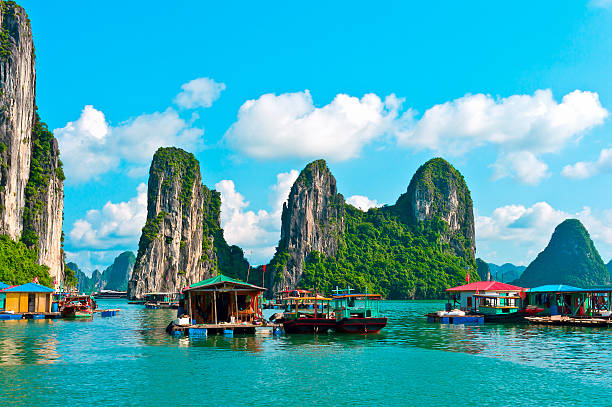Vietnam, a land of vibrant culture, stunning landscapes, and rich history, offers travelers a diverse experience from its northern highlands to its southern deltas. Deciding whether to explore North or South Vietnam first can be a challenge, especially with the array of Vietnam tour packages available to guide your journey. Both regions boast unique attractions, climates, and cultural identities. This article breaks down the highlights of North and South Vietnam to help you choose where to start your adventure.
North Vietnam: A Tapestry of History and NatureCultural and Historical Riches
North Vietnam, centered around Hanoi, is the cradle of Vietnamese culture. Hanoi’s Old Quarter pulses with street vendors, colonial architecture, and historic sites like the Temple of Literature, Vietnam’s first university. The region’s history runs deep, with landmarks like the Hoa Lo Prison and the Ho Chi Minh Mausoleum offering insights into the nation’s past. For those drawn to history, North Vietnam’s ancient temples and imperial cities, such as Hue, provide a glimpse into Vietnam’s dynastic heritage.
Natural Wonders
The north is home to some of Vietnam’s most breathtaking landscapes. Ha Long Bay, a UNESCO World Heritage Site, mesmerizes with its emerald waters and limestone karsts. Further inland, Sapa’s terraced rice fields and ethnic minority villages offer trekking opportunities amidst misty mountains. The cooler climate, especially from October to April, makes it ideal for outdoor adventures. Vietnam tour packages often include guided treks in Sapa or cruises in Ha Long Bay, ensuring a seamless experience.
Food and Vibe
Northern cuisine is subtle yet flavorful, with dishes like pho (beef noodle soup) and bun cha (grilled pork with noodles). The vibe in the north is more traditional, with a slower pace that reflects its historical roots. If you’re seeking an authentic cultural immersion, the north is a great starting point.
South Vietnam: Vibrant Cities and Tropical EscapesUrban Energy and Modernity
South Vietnam, anchored by Ho Chi Minh City (Saigon), is a bustling hub of modernity. District 1’s skyscrapers, vibrant markets like Ben Thanh, and nightlife give it a cosmopolitan edge. Historical sites, such as the Cu Chi Tunnels and the War Remnants Museum, offer a poignant look at Vietnam’s wartime history. The south feels dynamic, with a blend of tradition and contemporary life, making it perfect for those who thrive in urban settings.
Tropical Beauty
The Mekong Delta, a short trip from Ho Chi Minh City, is a must-visit for its lush waterways, floating markets, and rural charm. Islands like Phu Quoc beckon with pristine beaches and crystal waters, ideal for relaxation. The south’s tropical climate is warm year-round, with the dry season (December to April) being the best time for beachgoers and explorers alike.
Culinary Delights
Southern cuisine is bolder, with sweeter and spicier flavors. Try banh xeo (crispy pancakes) or hu tieu (southern-style noodle soup). The south’s food scene reflects its diverse influences, from Chinese to Khmer, making it a paradise for foodies.
Which Should You Choose?
Your choice depends on your travel style. If you’re drawn to history, cooler weather, and dramatic landscapes, start with North Vietnam. Its cultural depth and natural wonders like Ha Long Bay are unforgettable. If vibrant cities, tropical beaches, and a modern vibe appeal to you, South Vietnam’s energy and warmth are the way to go. Many Vietnam tour packages with Indian food offer combined itineraries, allowing you to experience both regions. Consider your interests and the season—north for cooler exploration, south for sunny escapes—and you can’t go wrong.
In conclusion, both North and South Vietnam offer distinct experiences. Start with the north for a cultural deep dive or the south for a lively, tropical adventure. Whichever you choose, Vietnam’s charm will leave you eager to explore more.
Also Read: A Complete Travel Guide To Hoi An 2025 – Vietnam’s Most Charming Town

